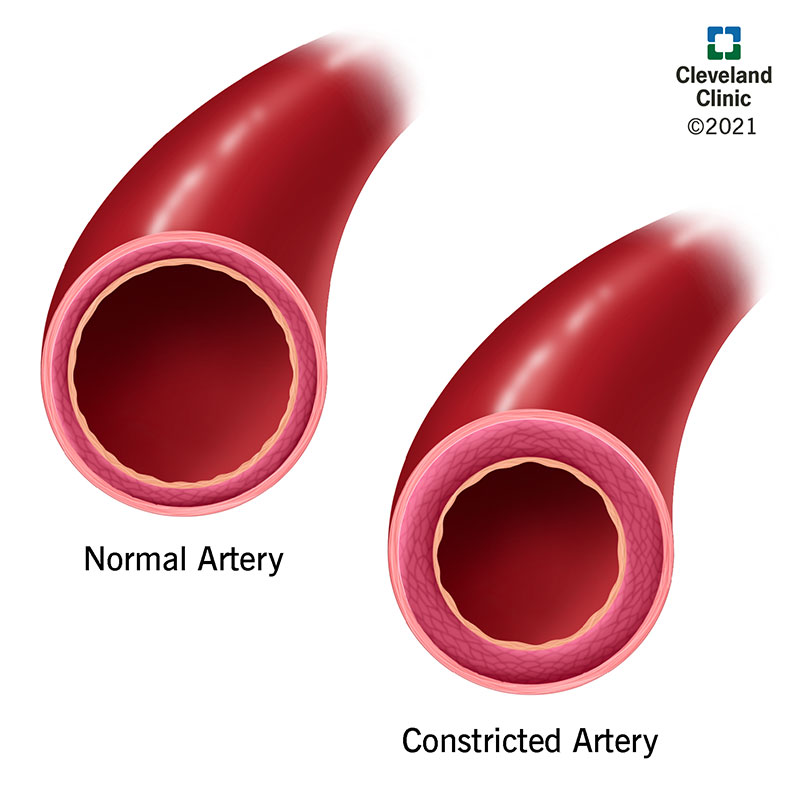What is an example of a risk factor in a patient with a heart attack?
Vomiting
Hypertension
Chest pain
Cell necrosis
The Correct Answer is B
Choice A Reason:
Vomiting is not a risk factor for a heart attack but rather a symptom that can occur during a heart attack. Risk factors are conditions or behaviors that increase the likelihood of developing a disease. Vomiting can be a sign of various conditions, including gastrointestinal issues or even a heart attack, but it does not contribute to the risk of having a heart attack.
Choice B Reason:
Hypertension, or high blood pressure, is a significant risk factor for heart attacks. It causes the heart to work harder than normal, leading to the thickening of the heart muscle and narrowing of the arteries. Over time, this increased workload can damage the arteries, making them more susceptible to blockages that can cause a heart attack. Managing blood pressure through lifestyle changes and medication is crucial in reducing the risk of heart attacks.
Choice C Reason:
Chest pain is a common symptom of a heart attack but not a risk factor. Risk factors are pre-existing conditions or behaviors that increase the likelihood of developing a disease. Chest pain, also known as angina, occurs when there is reduced blood flow to the heart muscle, often due to blockages in the coronary arteries. While chest pain indicates a potential heart problem, it is not a contributing factor to the development of a heart attack.
Choice D Reason:
Cell necrosis refers to the death of cells, which can occur during a heart attack when the blood supply to part of the heart muscle is blocked. This is a consequence of a heart attack rather than a risk factor. Risk factors are conditions or behaviors that increase the likelihood of developing a disease, whereas cell necrosis is a result of the disease process.
Nursing Test Bank
Naxlex Comprehensive Predictor Exams
Related Questions
Correct Answer is B
Explanation
Choice A Reason:
Atrophy refers to the reduction in size or wasting away of an organ or tissue due to a decrease in cell size or number. It is not a type of cell death but rather a process of cell shrinkage and loss of function. Therefore, it does not directly relate to the damage caused to nearby cells.
Choice B Reason:
This is the correct answer. Apoptosis is a form of programmed cell death that occurs in a controlled and regulated manner. It allows for the removal of damaged or unnecessary cells without causing an inflammatory response or damage to surrounding tissues. During apoptosis, cellular components are neatly packaged into vesicles called apoptotic bodies, which are then phagocytosed by neighboring cells or immune cells, preventing the release of harmful substances.
Choice C Reason:
Necrosis is a form of traumatic cell death that results from acute cellular injury. It often leads to the uncontrolled release of cellular contents, causing inflammation and damage to surrounding tissues. This process can be detrimental to nearby cells and is generally considered more harmful than apoptosis.
Choice D Reason:
Lysis refers to the breaking down or destruction of cells, often due to external factors such as toxins, infections, or immune responses. Like necrosis, lysis can result in the release of cellular contents into the surrounding environment, leading to inflammation and damage to nearby cells.
Correct Answer is D
Explanation
Choice A: Minimal Effect on Vessels
A reduction in blood pH, which indicates acidosis, does not have a minimal effect on blood vessels. Acidosis can significantly impact vascular tone and function. Therefore, this choice is incorrect as it underestimates the physiological changes that occur in response to a decrease in pH.
Choice B: No Effect on Vessels
Similarly, stating that a reduction in blood pH has no effect on vessels is inaccurate. Blood pH is tightly regulated, and deviations from the normal range (7.35-7.45) can lead to significant physiological responses. Acidosis can alter vascular tone, making this choice incorrect.
Choice C: Vasodilation
While vasodilation can occur in response to certain conditions, a reduction in blood pH typically leads to vasoconstriction rather than vasodilation. Vasodilation is more commonly associated with an increase in blood pH (alkalosis) or other factors such as increased levels of nitric oxide or prostaglandins.
Choice D: Vasoconstriction
When the pH of blood reduces, indicating acidosis, it often leads to vasoconstriction. This response is mediated by chemoreceptors that detect changes in pH and stimulate the vasomotor center to increase vascular tone. Vasoconstriction helps to maintain blood pressure and ensure adequate perfusion of vital organs during acidosis. Therefore, this is the correct answer.

Whether you are a student looking to ace your exams or a practicing nurse seeking to enhance your expertise , our nursing education contents will empower you with the confidence and competence to make a difference in the lives of patients and become a respected leader in the healthcare field.
Visit Naxlex, invest in your future and unlock endless possibilities with our unparalleled nursing education contents today
Report Wrong Answer on the Current Question
Do you disagree with the answer? If yes, what is your expected answer? Explain.
Kindly be descriptive with the issue you are facing.
